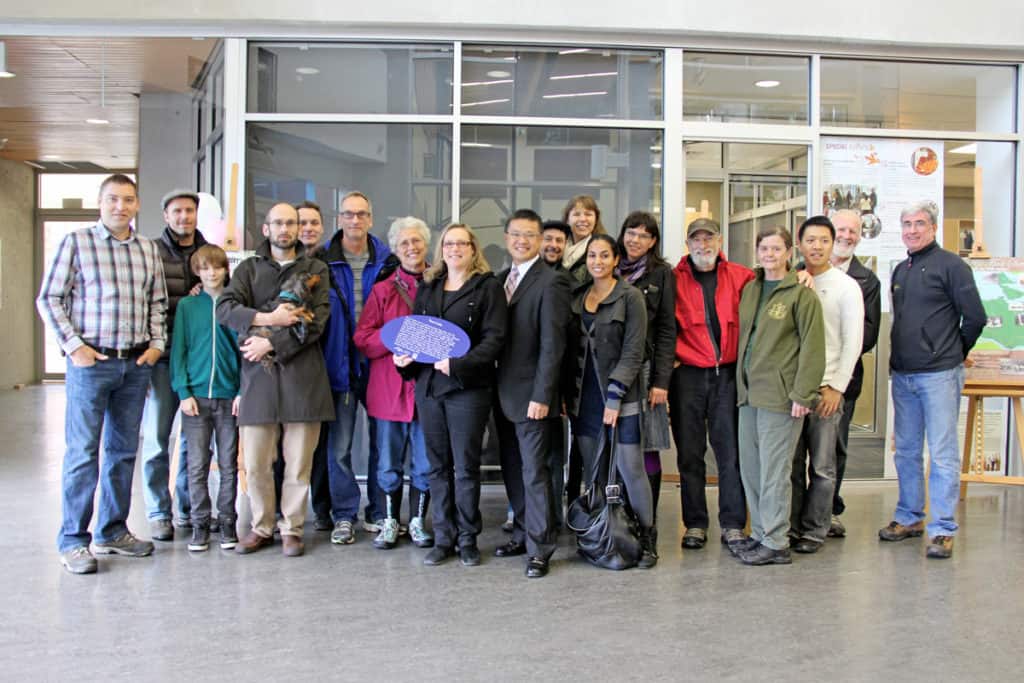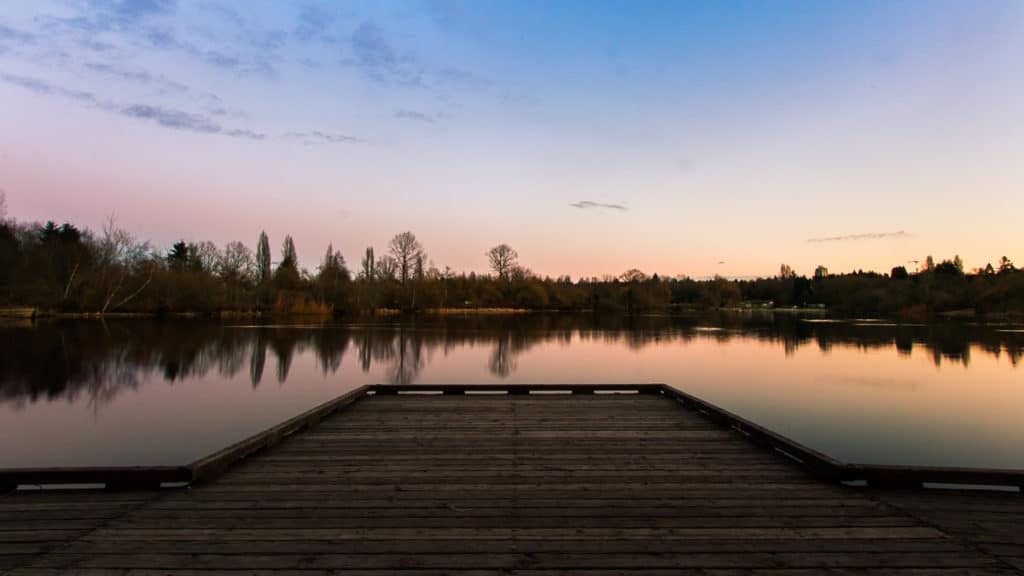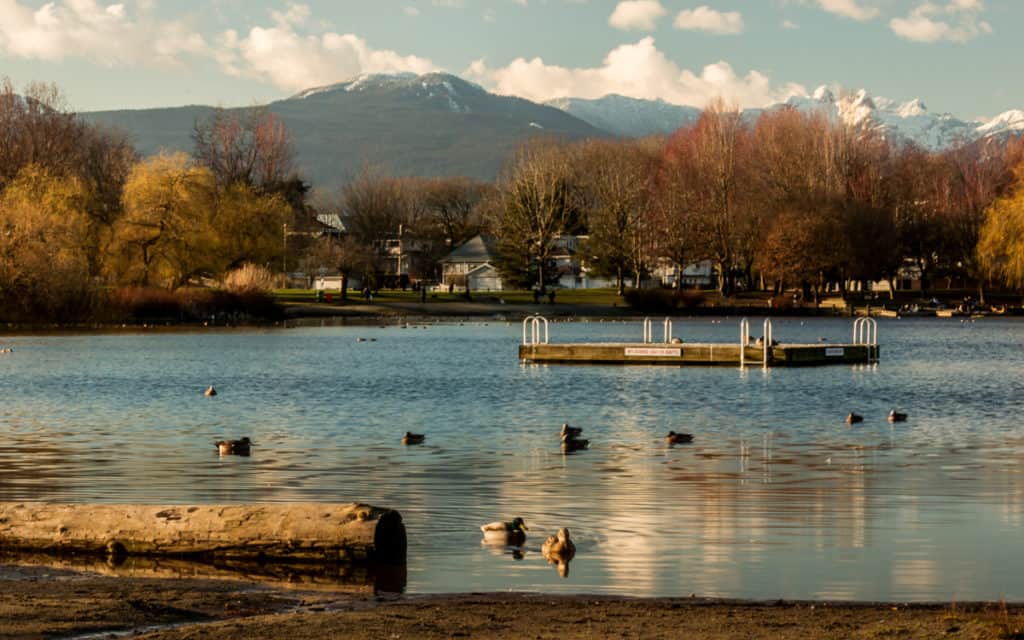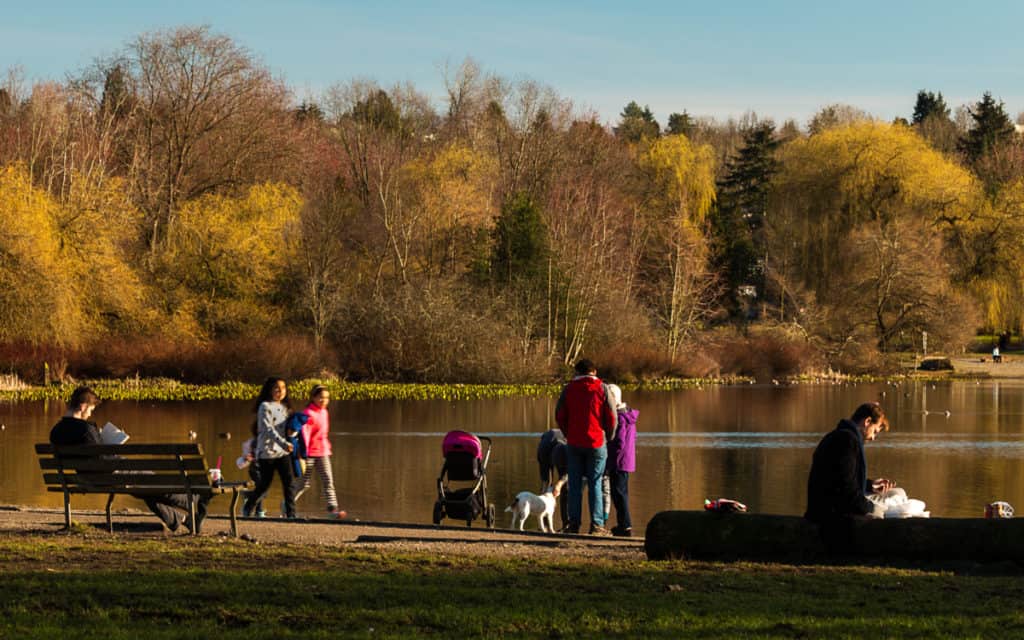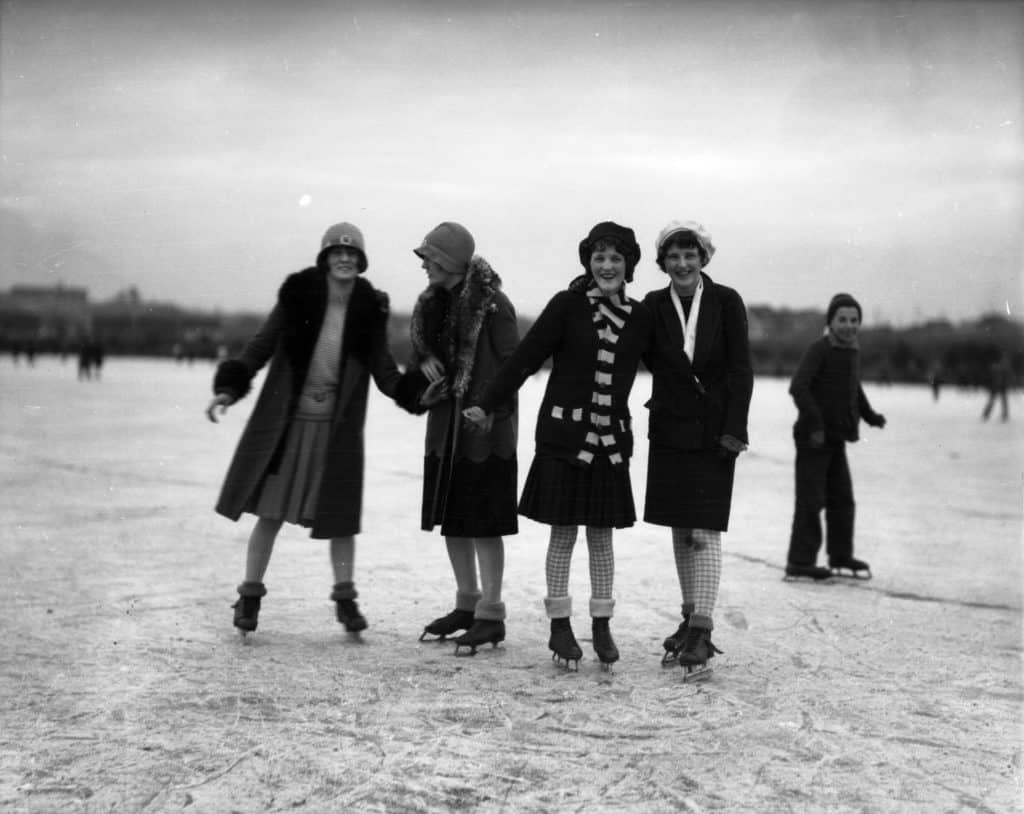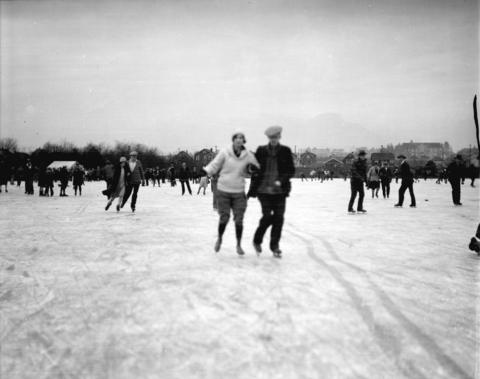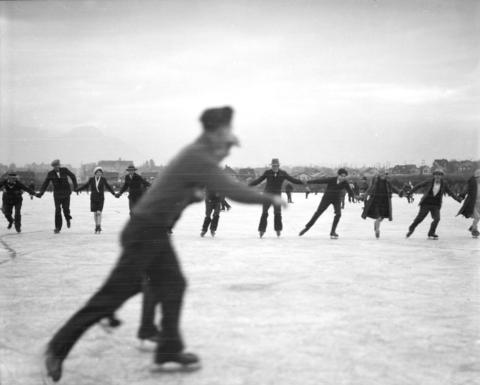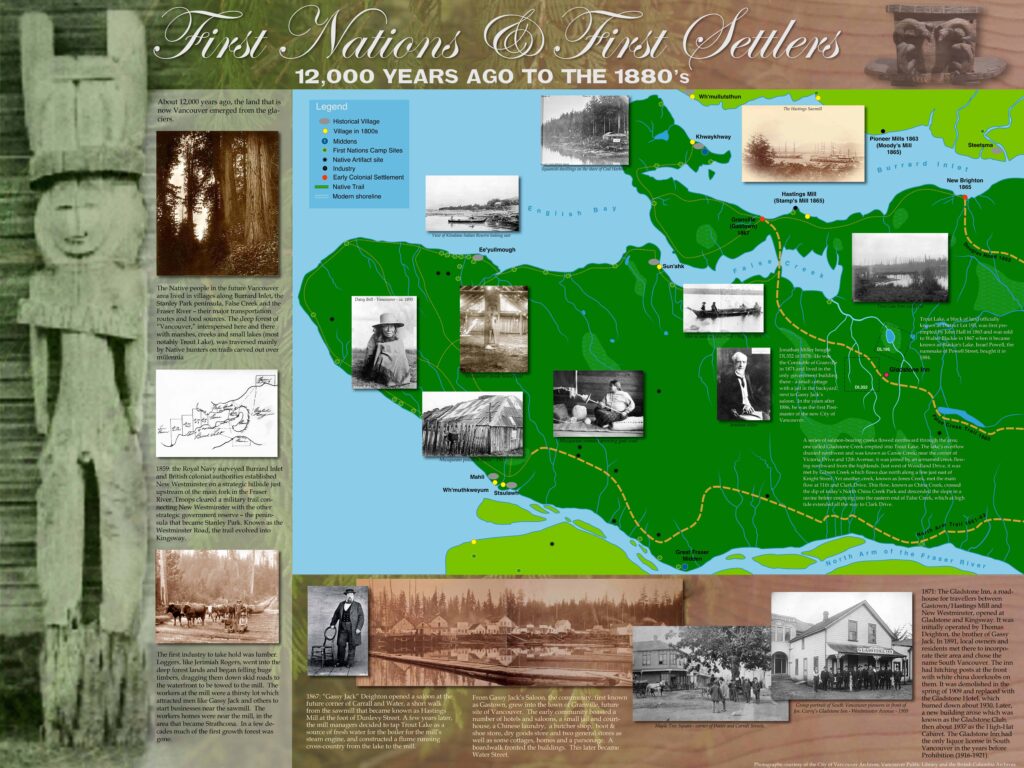“Trout Lake was where my brothers and sisters and I learned to swim over 60 years ago. The lessons were sponsored by the Vancouver Sun and were free. I was one of 7 children. My mom kept house and dad was a warrant officer in the RCAF. Paying for swimming lessons wasn’t an option and very likely we would never have learned this valuable life skill. As we got older we were allowed to swim out to the raft. One of our favourite things was to swim out to the shower, letting the cold water rain down on us making the lake water feel like a warm bath on the way back to shore. Occasionally when the weather was really hot dad would take us swimming at 6:00 in the morning before he went to work. Of course at that hour the swimming area was covered with green algae which we spent time clearing away. Usually our scalp was green afterwards but we didn’t care. We often walked to the park in bare feet but when the weather was very hot the tar on East 19th Ave melted and got stuck to the bottom of our feet. Mom wasn’t too pleased. It took her quite awhile to get it off. We spent most of summer days in the park.
Mom would sometimes surprise us by bringing a picnic lunch in a (very cool to us) bamboo picnic basket. We lived on East 20th just off Hull St. In the winter, if the weather got cold enough we skated on the lake. If there was skating at night there was a bonfire on the beach so we could warm up. We would bring a thermos of hot chocolate. It was a very exciting time when the indoor ice rink was built so we didn’t have to rely on cold winters to skate. I live in Coquitlam now and today on June 25, 2020 in the midst of Covid-19 pandemic I am taking my granddaughters to see where I grew up and share some of my favourite childhood memories living only a block away from John Hendry Park. To be able to go swimming everyday, no transportation or money required was a dream come true for me.”
Trout Lake was a natural peat bog lake fed by many streams and home to abundant trout, salmon and beaver. In the pre-contact era, Aboriginal trails passed alongside. From the 1860s until the city built its Capilano water system in the 1880s, the lake provided water, via a flume, for the boilers at Hastings Mill on Burrard Inlet and was a popular skating rink during cold winters. The lake and surrounding land were donated to the Park Board in the 1920s by Aldyen Hendry Hamber on the condition that it be named for her father, John Hendry, one of the industrialists who had owned the Hastings Mill.



